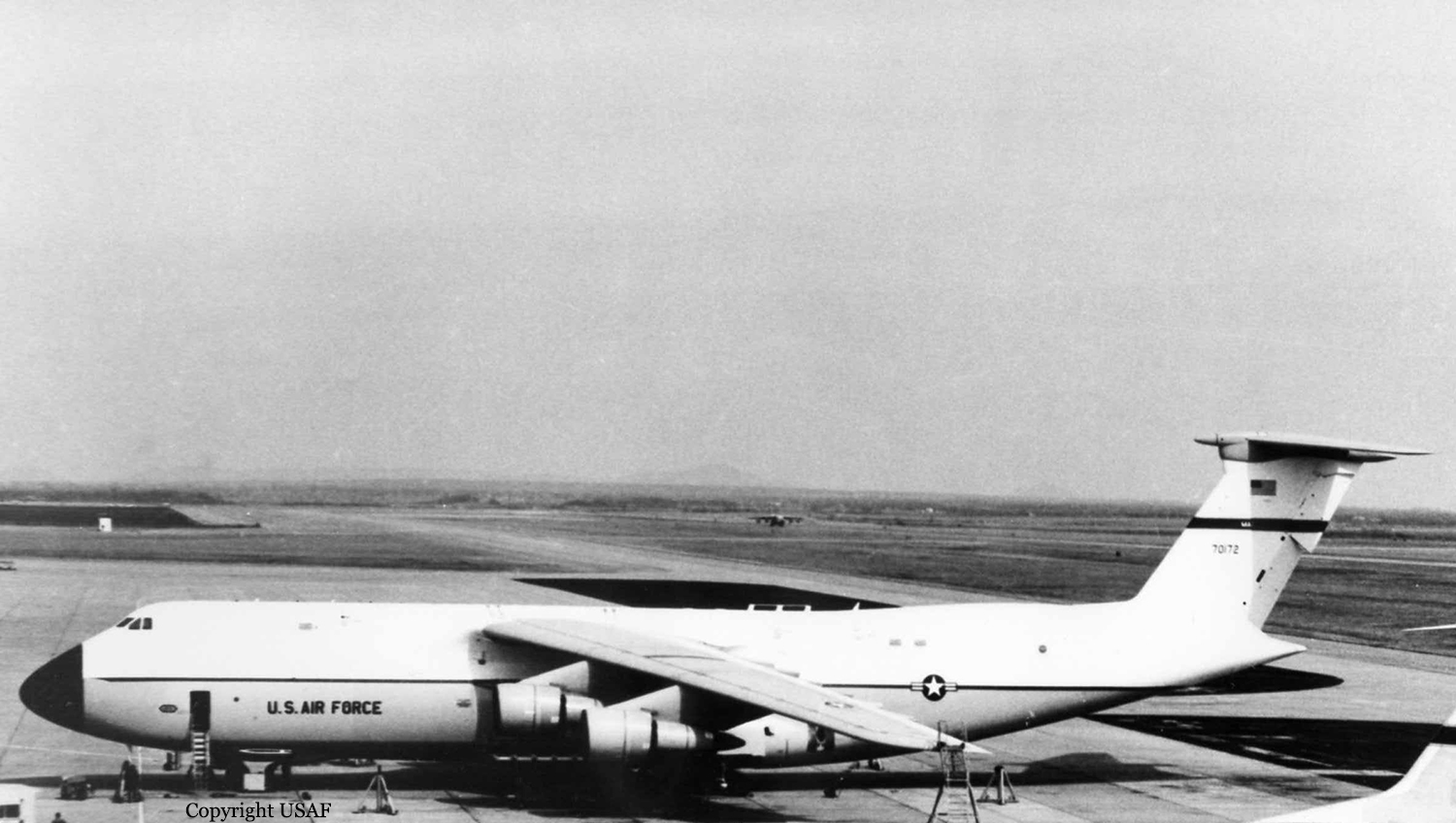Country
Crash of a Lockheed C-5A Galaxy at Ramstein AFB: 13 killed
Date & Time:
Aug 29, 1990 at 0034 LT
Registration:
68-0228
Survivors:
Yes
Schedule:
Ramstein - Dhahran
MSN:
500-0031
YOM:
1970
Crew on board:
8
Crew fatalities:
Pax on board:
9
Pax fatalities:
Other fatalities:
Total fatalities:
13
Circumstances:
The four engine aircraft departed Ramstein AFB on a flight to Dhahran, carrying medical supplies, food and various equipment for US troops based in Saudi Arabia. Following a night takeoff from runway 27, while at a height of about 50-100 feet at a speed of 161 knots, the aircraft stopped climbing and started rolling to the left. The left wing struck pine trees, causing the engine n°1 to be torn off. Out of control, the airplane lost height and crashed in a wooded area located about one km past the runway end. Four occupants were seriously injured while 13 others were killed. The aircraft was totally destroyed.
Probable cause:
It was determined that the thrust reverser on engine n°1 inadvertently deployed shortly after liftoff due to technical issue.
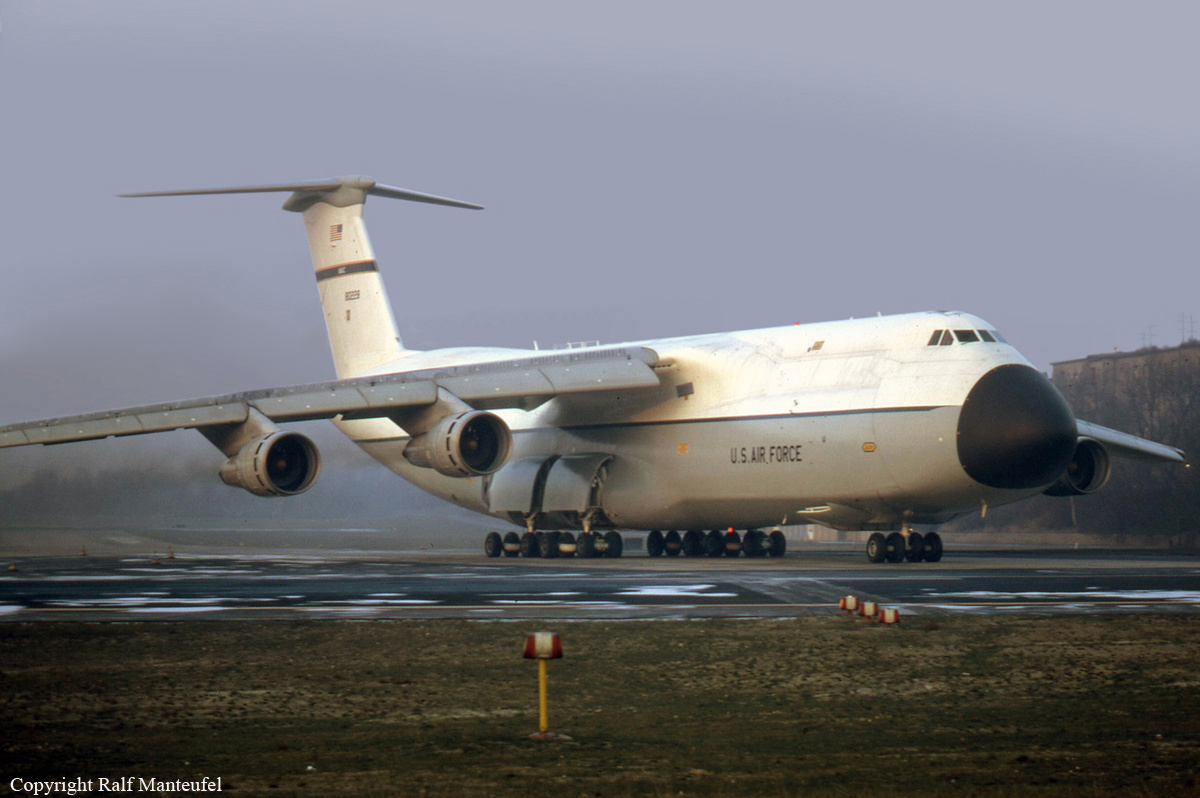
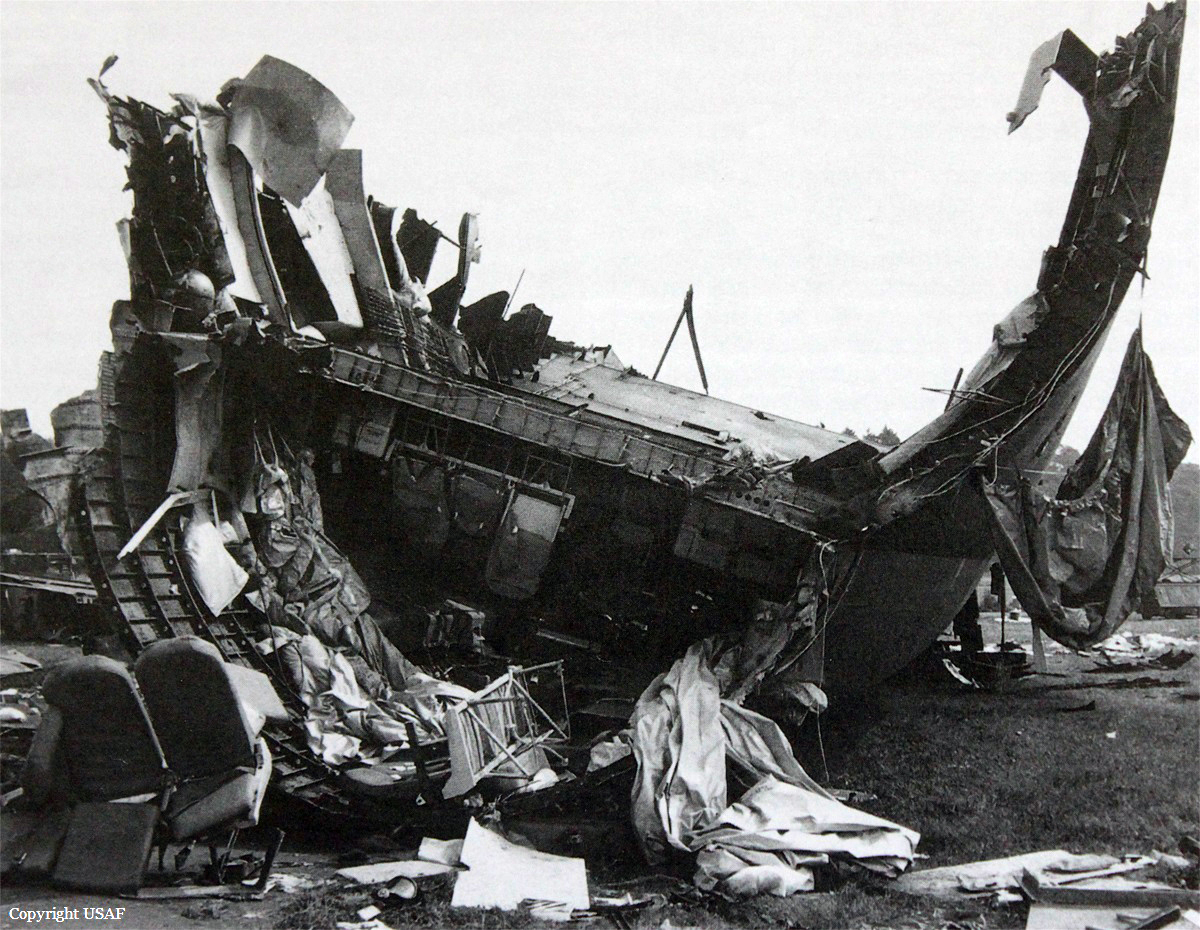
Crash of a Lockheed C-5A Galaxy in Saigon: 155 killed
Date & Time:
Apr 4, 1975 at 1630 LT
Registration:
68-0218
Survivors:
Yes
Schedule:
Saigon - Clark - Los Angeles
MSN:
500-0021
YOM:
1970
Crew on board:
16
Crew fatalities:
Pax on board:
314
Pax fatalities:
Other fatalities:
Total fatalities:
155
Circumstances:
The airplane was engaged in a humanitarian flight, taking part to the 'Operation Babylift', a mission consisting to bring Vietnamese orphans back to the US in the few remaining days before the Republic of Vietnam fell. At 1603LT, the airplane departed Saigon-Tan Son Nhat Airport bound to the east. Twelve minutes later, while cruising at an altitude of 23,000 feet over the South China Sea, a technical issue occurred on the rear access ramp doors followed by a rapid decompression of the cabin. A crew member fell out of the airplane and shortly later, the access ramp door detached and fell into sea as well. The captain contacted ATC, declared an emergency and was cleared to return to Saigon Airport. At that time, two of the four hydraulic systems were out of order and control and trim cables to the rudder and elevators were severed, leaving only one aileron and wing spoilers operating. Nevertheless, the crew was able to descend to runway 25L when the rate of descent increased to 4,000 feet per minute. The airplane struck the ground a first time at a speed of 250 knots about 4 km short of runway 25L, bounced for three seconds and then crashed 500 meters further in a rice paddy field. The aircraft disintegrated on impact and debris scattered on a wide area. There were on board 149 orphans, 10 members of a medical team, 155 military personnels and 16 crew members. It was reported that 141 orphans were killed as well as six soldiers, five crew members and three of the medical team. The United States Navy amphibious cargo ship USS Durham, frigate USS Reasoner and command ship USS Blue Ridge were assigned to search for the flight data recorder in the South China Sea. The recorder was found and US Navy ships and helicopters also discovered debris from the doors in the South China Sea as well as the body of a crew member.
Probable cause:
When the rear doors were eventually recovered from the sea, investigation determined that some of the locks had not engaged properly. Maintenance records showed that locks had been cannibalized for spares, then subsequently improperly refitted so that not all the door locks were engaging correctly. Accounts also indicated the initial maintenance inspection noticed 5 of the 7 locks were not operating and failed the aircraft for flight. With external organizational pressure to get the flight airborne, a second off-shift maintenance team was called in. They subsequently missed the locks during inspection and the aircraft was cleared for flight. Furthermore, the flight crew confirmed that they had encountered difficulty closing the doors before takeoff. As the air pressure differential increased with altitude, the few locks that were working correctly were unable to bear the load, and the door failed.
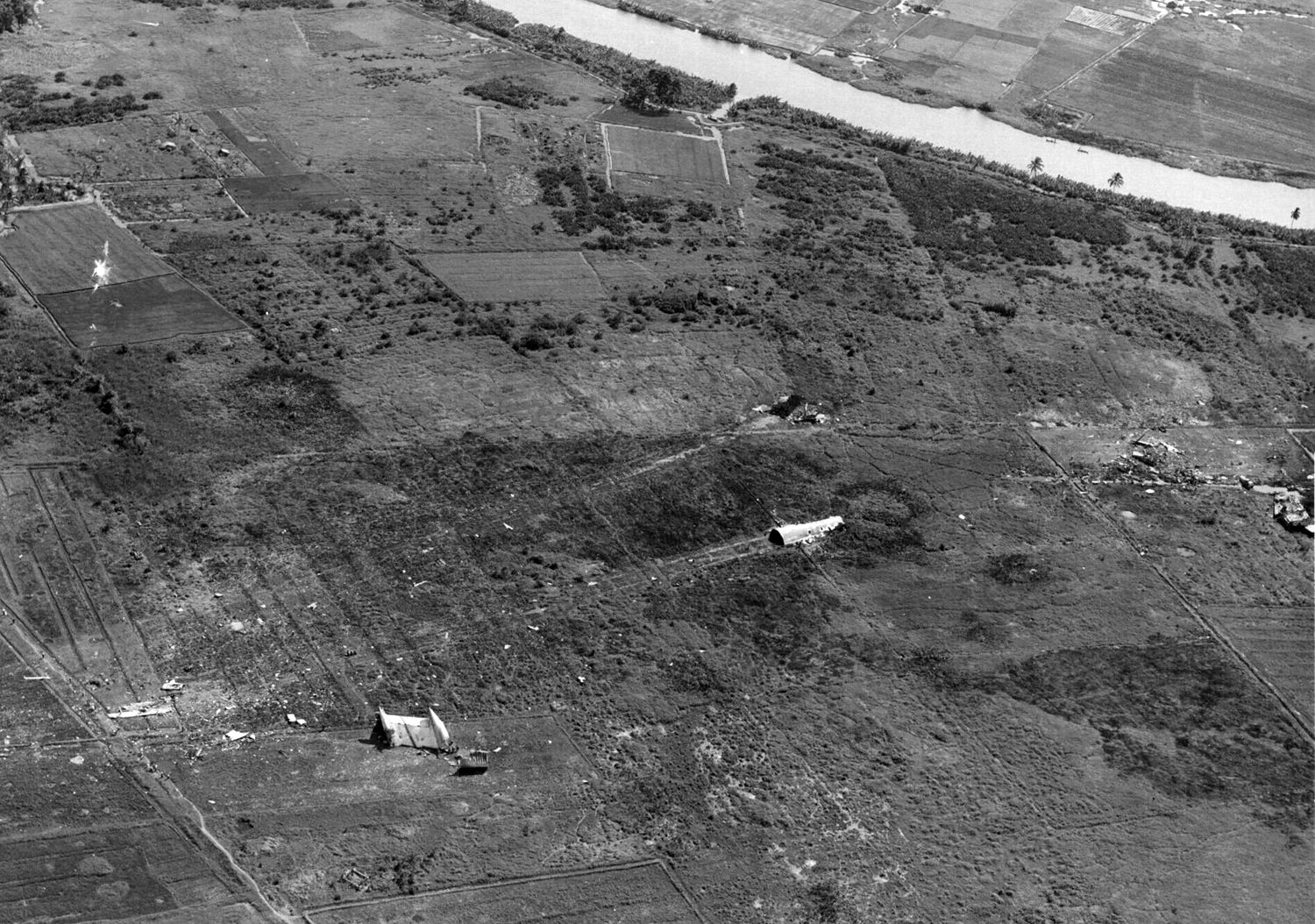
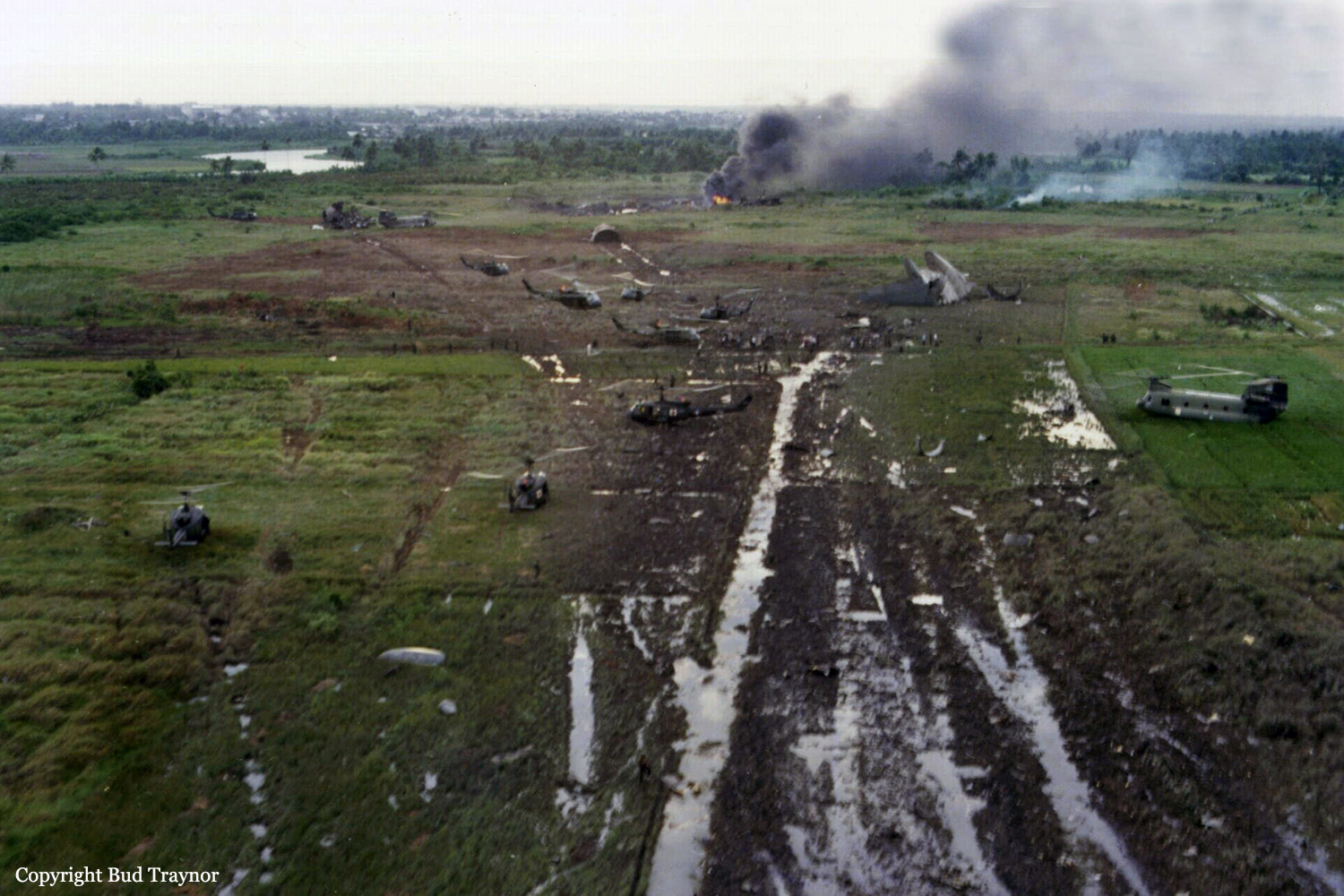
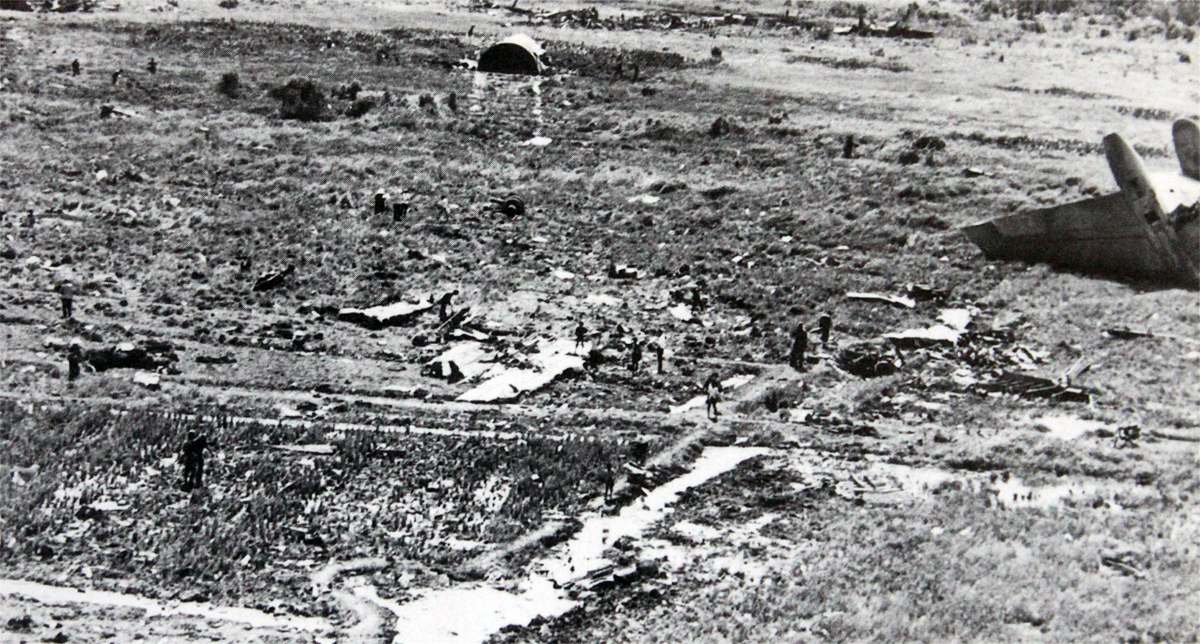

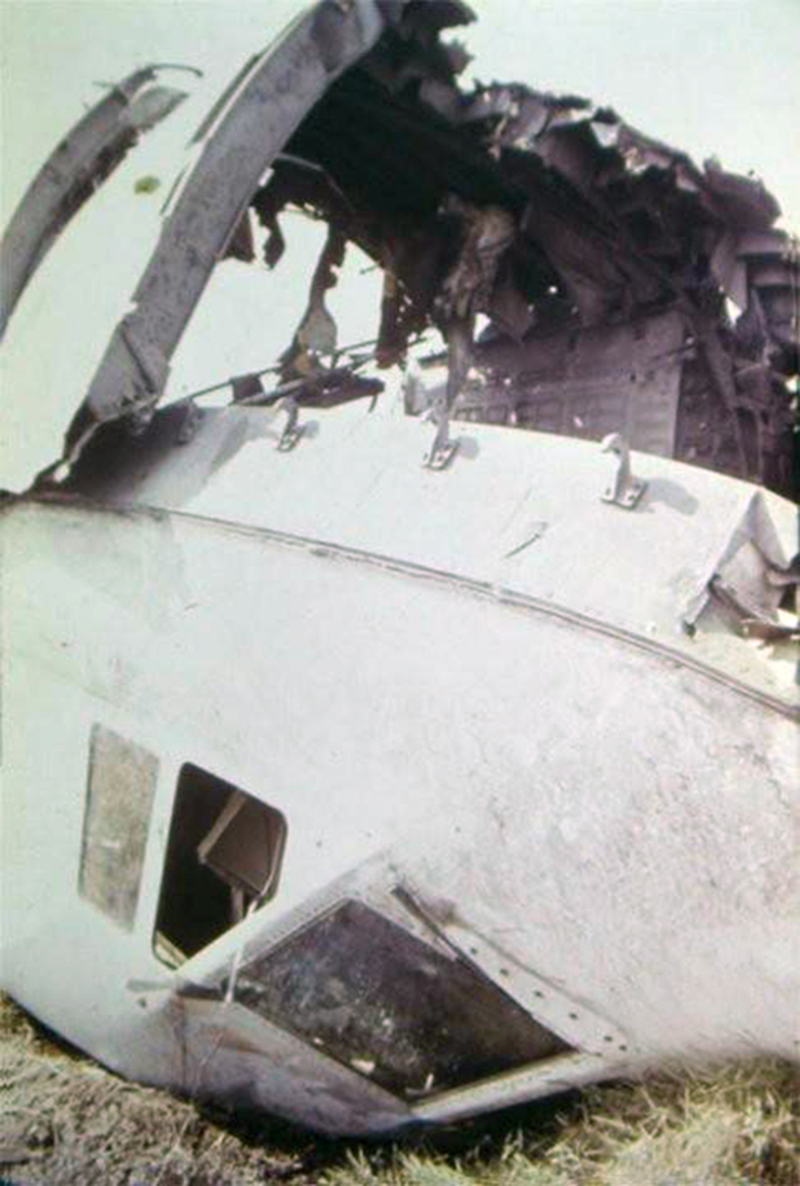
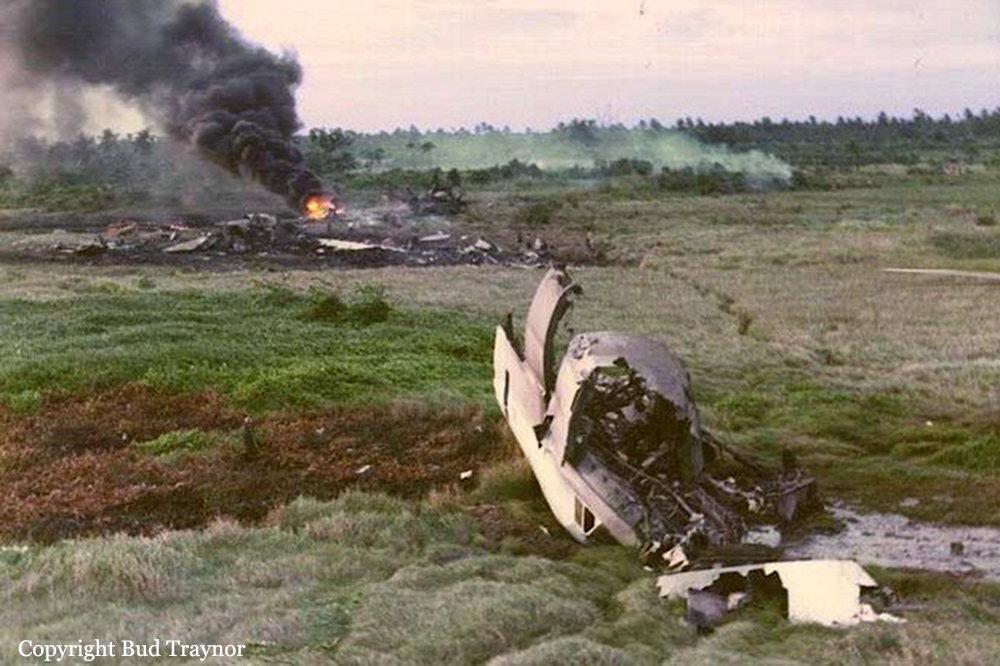
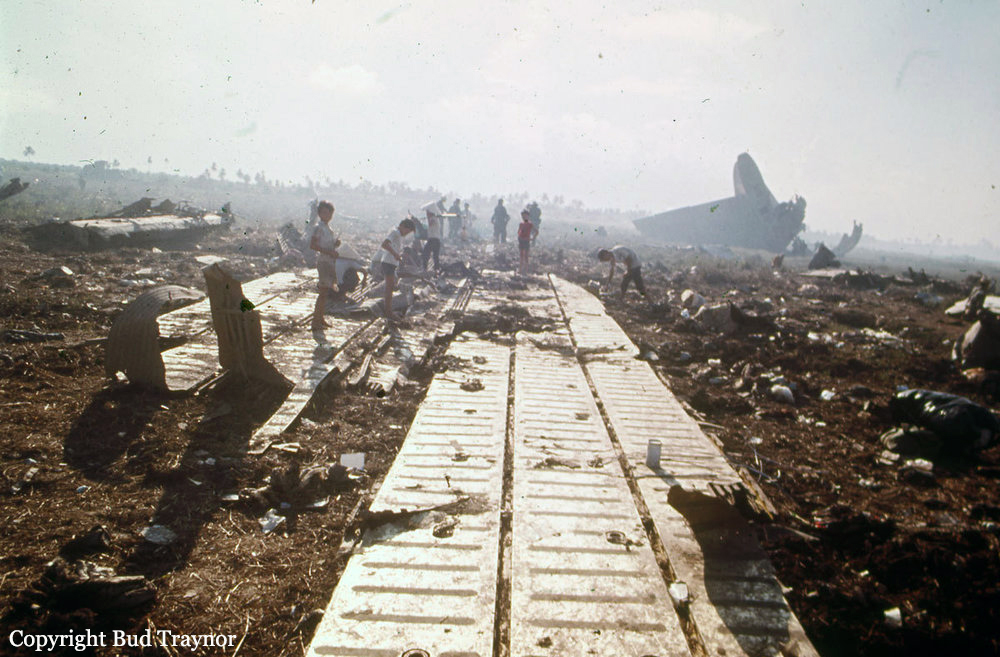
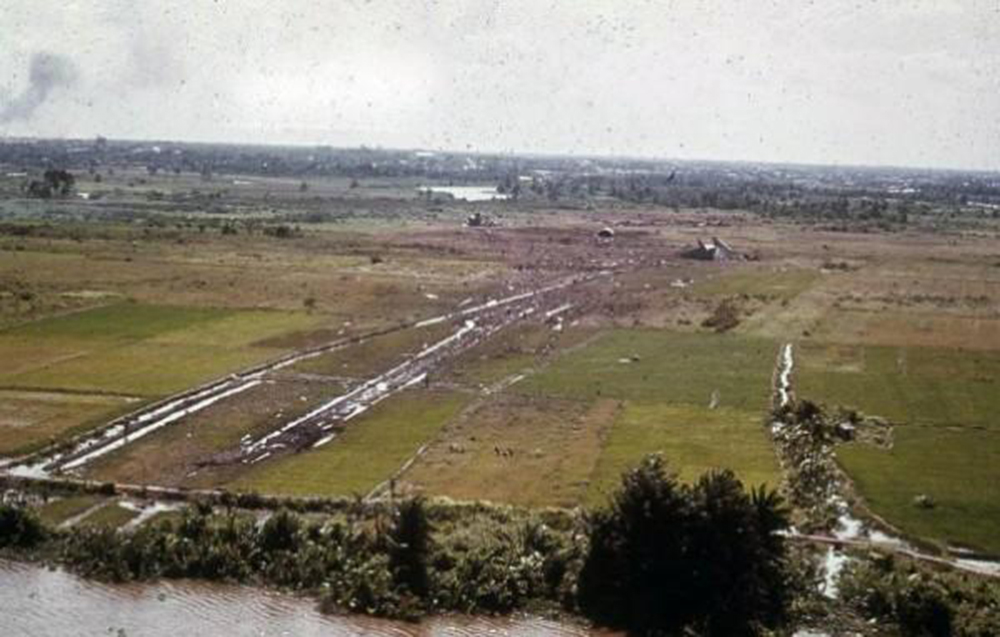
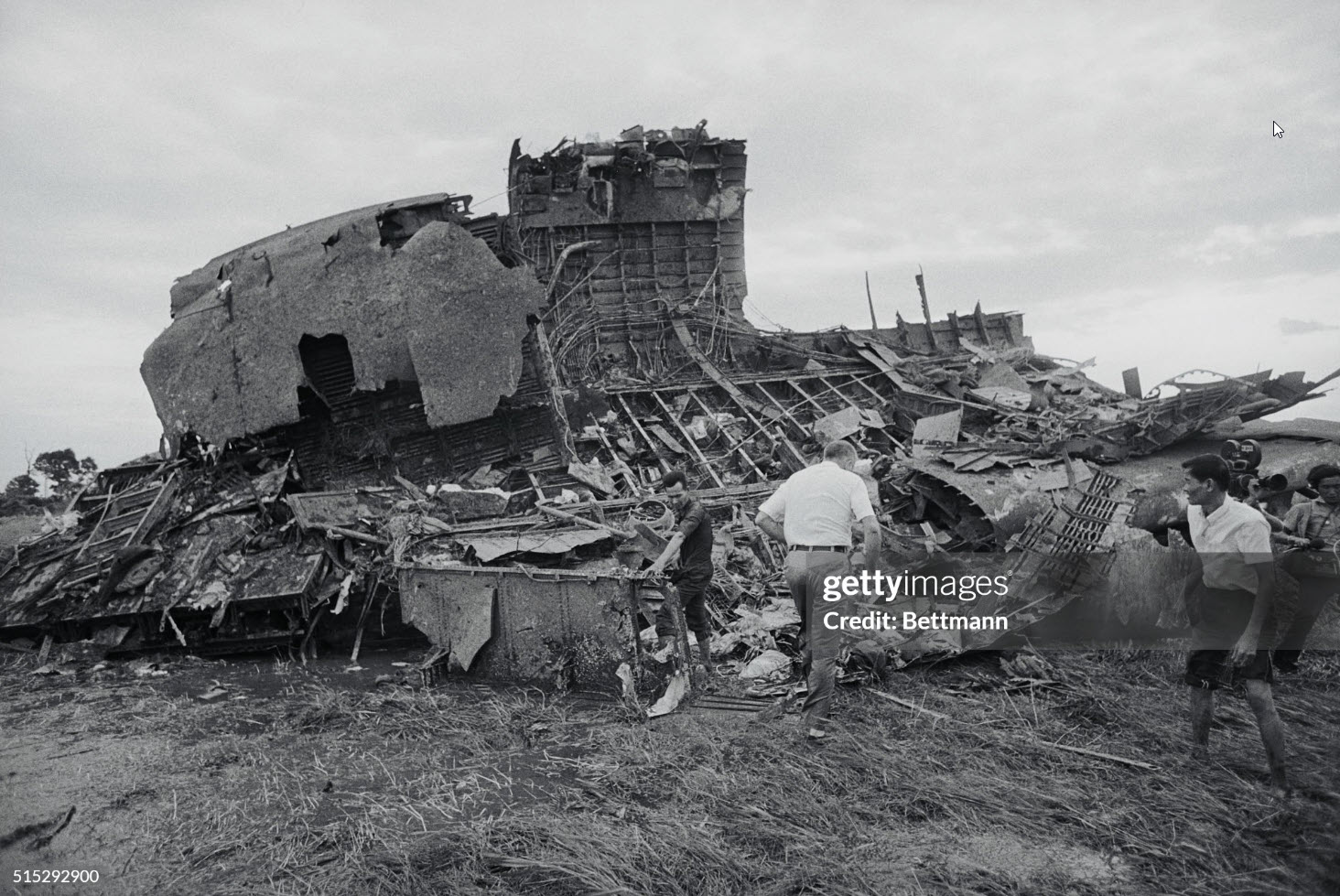
Crash of a Lockheed C-5A Galaxy in Clinton
Date & Time:
Sep 27, 1974
Registration:
68-0227
Survivors:
Yes
Schedule:
Altus - Altus
MSN:
500-0030
YOM:
1970
Crew on board:
5
Crew fatalities:
Pax on board:
0
Pax fatalities:
Other fatalities:
Total fatalities:
0
Circumstances:
The crew departed Altus AFB in the day for a refueling training mission. En route, the pilot informed ground about technical problems and decided to divert to Clinton-Sherman Airport. For unknown reason, the crew mistook the airport and landed on runway 17 (4,300 feet long) at Clinton-Regional Airport. Unable to stop within the remaining distance, the airplane overran, lost its landing gear and came to rest in a field, broken in three. All five crew members were rescued while the forward section was destroyed by a post crash fire.
Probable cause:
An overheated brake ignited hydraulic fluid in the left aft landing gear well. The fire ignited tires and other components before burning through the keel beam and continuing into the right aft well. This was probably caused by a problem that occurred during taxiing at Altus AFB.
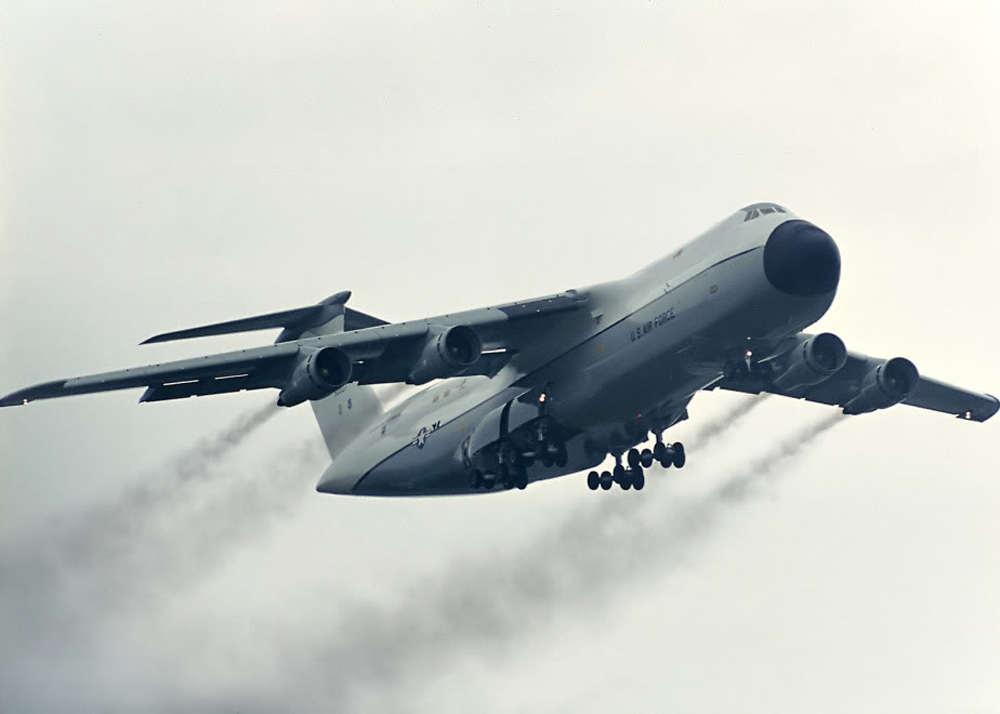
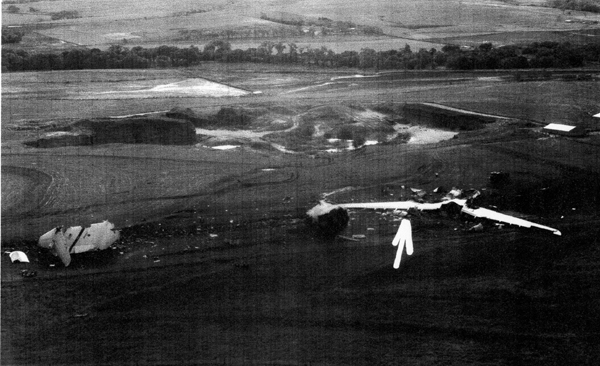
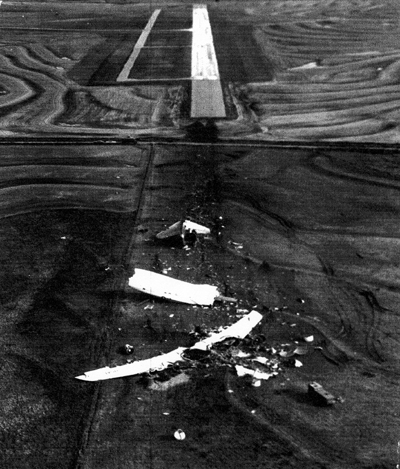
Crash of a Lockheed C-5A Galaxy at Palmdale AFB
Date & Time:
May 25, 1970
Registration:
67-0172
Survivors:
Yes
MSN:
500-0011
YOM:
1970
Crew on board:
5
Crew fatalities:
Pax on board:
0
Pax fatalities:
Other fatalities:
Total fatalities:
0
Circumstances:
While taxiing at Palmdale AFB, the airplane caught fire. The crew immediately stopped then airplane on the taxiway and was able to evacuated the cabin. The aircraft was totally destroyed after 45 minutes of an intense fire. The cause remains unknown.
